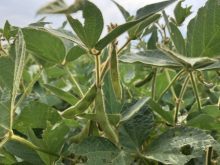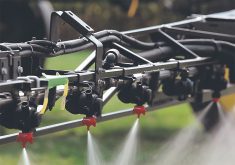The Saskatchewan Canola Growers Association has some tips to avoid disappointments with seed or chemicals, particularly if a dispute arises with a supplier or manufacturer.
The association says the first line of defence is to use certified seed, follow recommended agronomic practices and obey label directions on chemicals.
But if something goes wrong it’s also important to back up with written records the situation under which the crop is grown.
Keep accurate and organized field records for at least four years. Include information such as date of seeding and sowing rate, the history of crops and pesticide on the field, precipitation and temperature data, the type of tillage employed, fertilizers used and mode of application, rate and date of pesticides used, swathing and harvesting dates.
Read Also

No special crop fireworks expected
farmers should not expect fireworks in the special crops market due to ample supplies.
Pay particular attention to seed records. Keep the seed tags and bills of sale through the season. Know the numbering system used for your seed lot.
Ask for the type and date of seed treating and coating. Treatments should have been performed not much more than six months before seeding. Get a recent germination test.
Keep a two kilogram bag of each type, variety and lot of seed sown, along with its certified seed identification tags, in a separate cloth bag in a cool, dry place until after harvest.
If a problem develops after seeding, the need for documented evidence grows.
- As soon as it appears, get at least one professional agrologist, such as a provincial ag rep, a chemical representative or crop insurance adjuster to visit the site and evaluate the situation to recommend action to correct the problem.
- Get a written report if the problem is linked to a product.
- Notify the company and supplier as soon as possible.
- Take photos and/or videos of the problem area. Document the exact location and date of the pictures. Get close-ups and panoramic shots.
- Try to find a nearby crop that was managed the same way as to sowing date, seeding depth, chemical treatments and so on. Take pictures of it too.
Finally, if the problem is with canola, notify the association to help it identify widespread problems and work with the seed and crop protection industries to help rectify them.
The SCGA can be reached at 800-690-5788.














